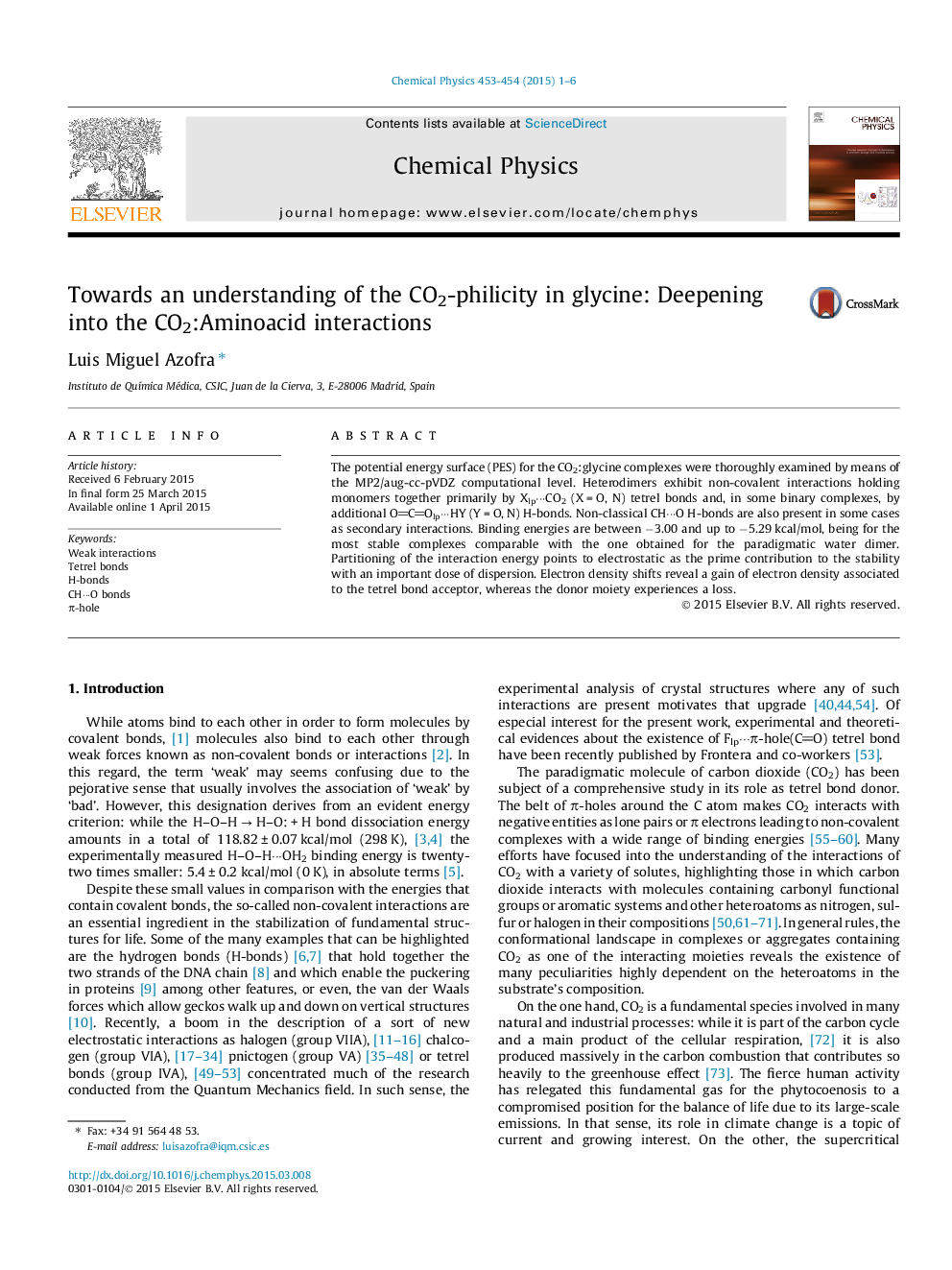| Article ID | Journal | Published Year | Pages | File Type |
|---|---|---|---|---|
| 5373356 | Chemical Physics | 2015 | 6 Pages |
â¢CO2:glycine heterodimers has been studied by means of MP2/aug-cc-pVDZ level.â¢Heterodimers exhibit tetrel and H-bonds.â¢Binding energies are between â3.00 and â5.29 kcal/mol.â¢Electrostatic is the prime contribution to the energy stability followed by dispersion.
The potential energy surface (PES) for the CO2:glycine complexes were thoroughly examined by means of the MP2/aug-cc-pVDZ computational level. Heterodimers exhibit non-covalent interactions holding monomers together primarily by Xlp···CO2 (X = O, N) tetrel bonds and, in some binary complexes, by additional OCOlp···HY (Y = O, N) H-bonds. Non-classical CH···O H-bonds are also present in some cases as secondary interactions. Binding energies are between â3.00 and up to â5.29 kcal/mol, being for the most stable complexes comparable with the one obtained for the paradigmatic water dimer. Partitioning of the interaction energy points to electrostatic as the prime contribution to the stability with an important dose of dispersion. Electron density shifts reveal a gain of electron density associated to the tetrel bond acceptor, whereas the donor moiety experiences a loss.
Graphical abstractDownload full-size image
